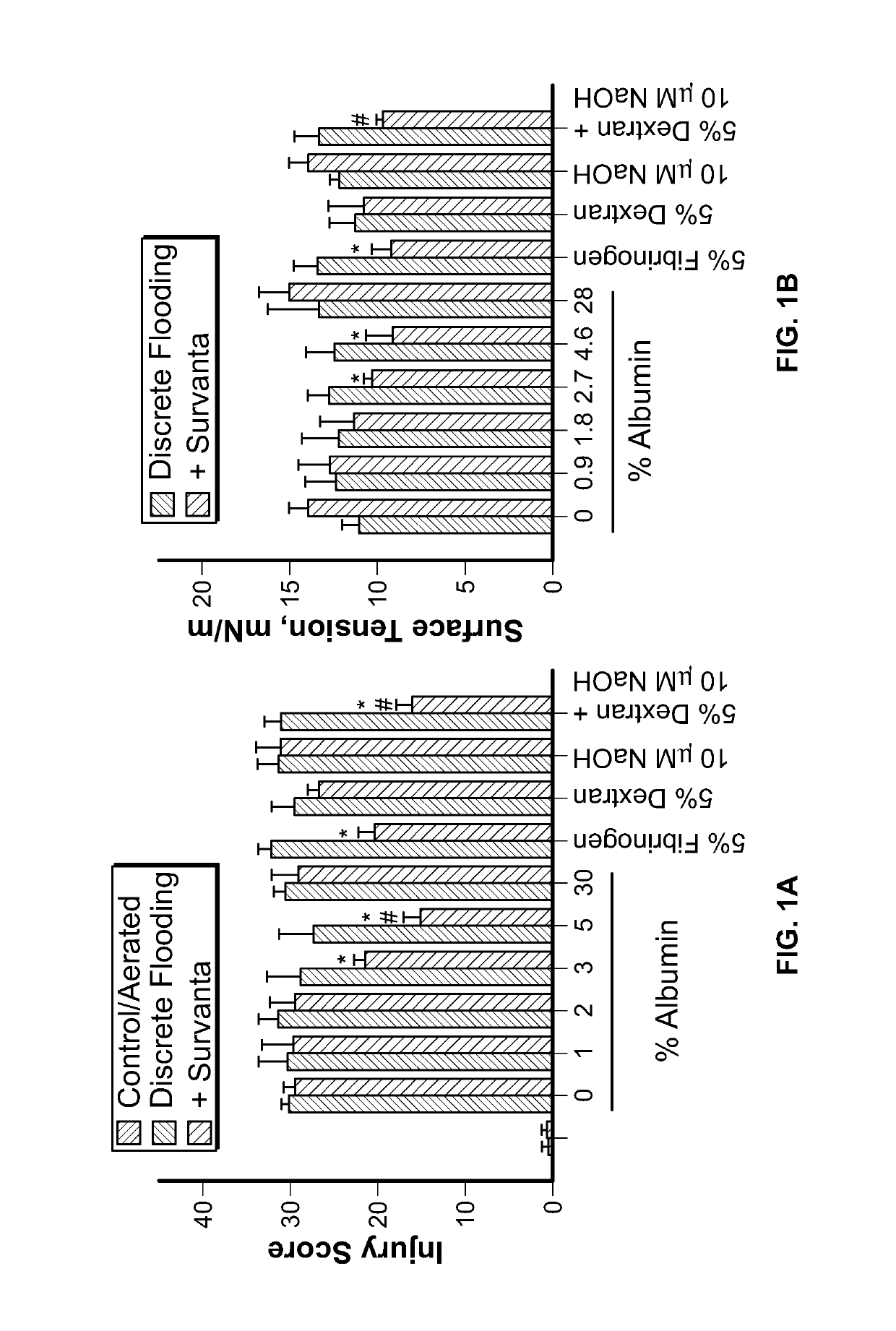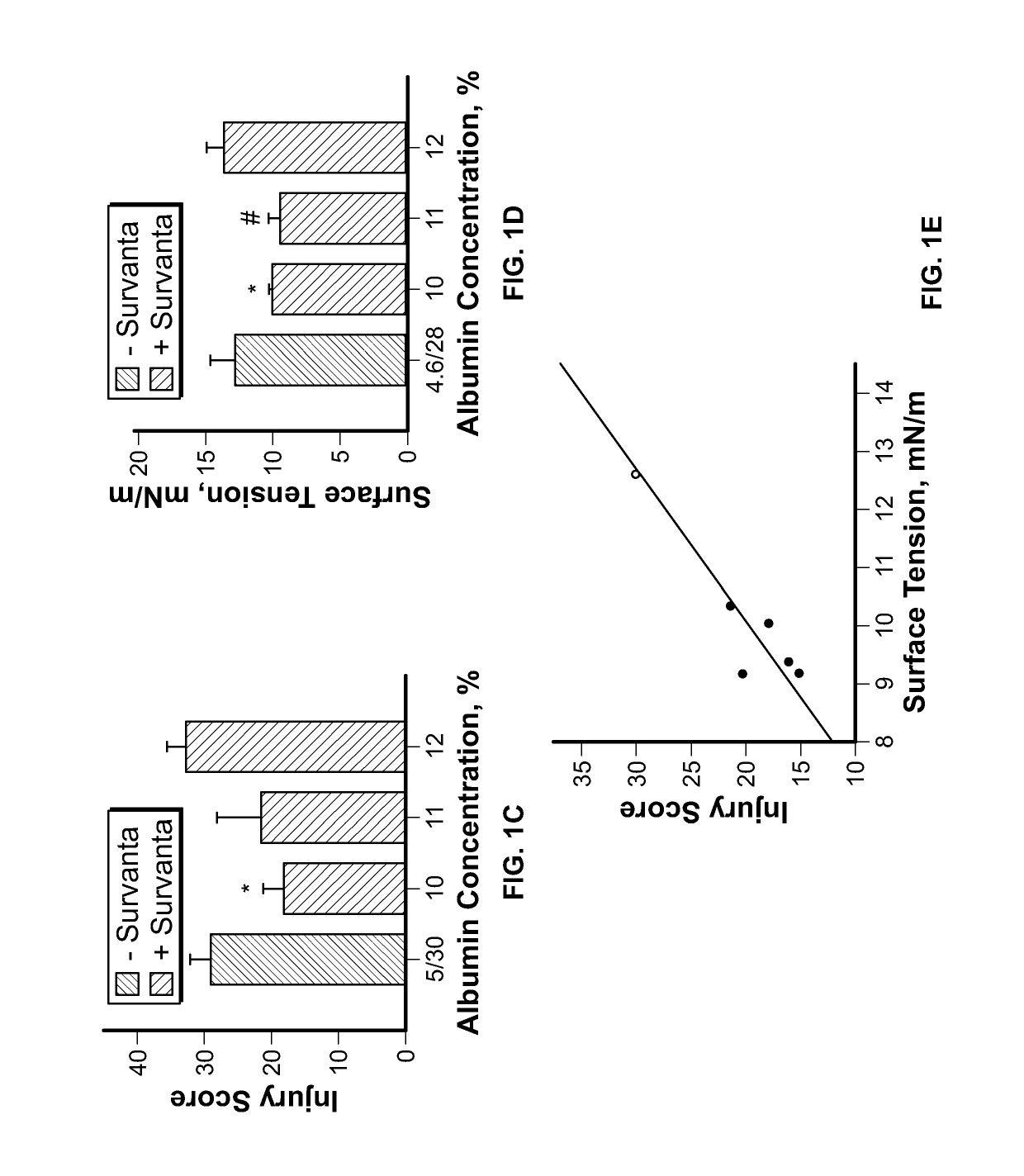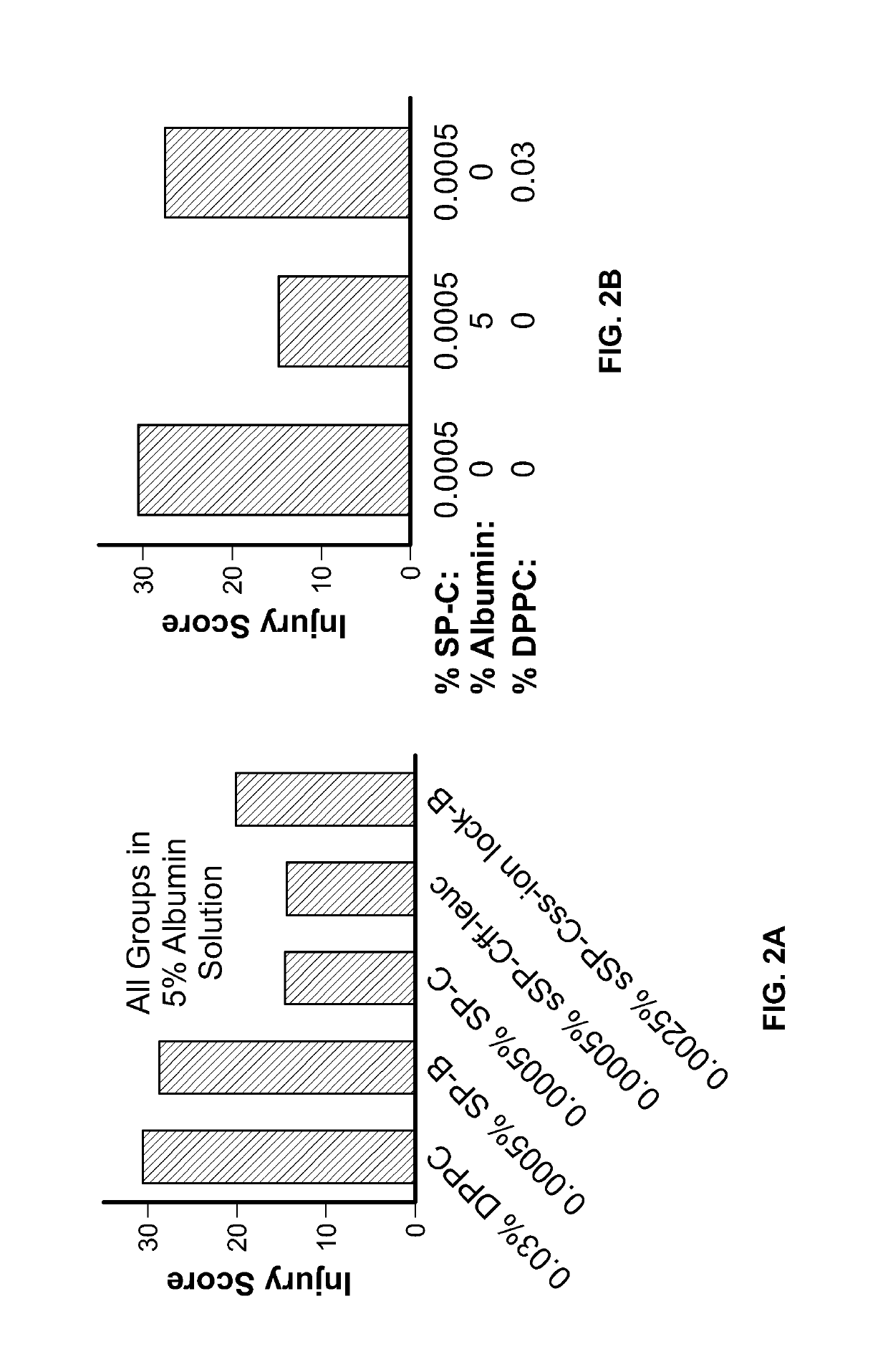Dilute surfactant or isolated surfactant protein solution for the reduction of surface tension in the lung
a surfactant or isolated technology, applied in the direction of pharmaceutical active ingredients, peptide/protein ingredients, pharmaceutical delivery mechanisms, etc., can solve the problems of preventing patient recovery, aggravated underlying lung disease, and not reducing ards mortality, so as to reduce the surface tension of liquid, reduce the surface tension, and reduce the surface tension
- Summary
- Abstract
- Description
- Claims
- Application Information
AI Technical Summary
Benefits of technology
Problems solved by technology
Method used
Image
Examples
Embodiment Construction
[0045]The present invention overcomes the disadvantages and shortcomings discussed above. Four alternative methods are used to assess the surface activity of test solutions:
[0046]1. direct surface tension determination in surface alveoli of the isolated adult rat lung, which contains native lung surfactant, following alveolar instillation of a test solution;
[0047]2. degree of ventilation induced injury in a region of the isolated, perfused adult rat lung in which surface alveoli have been flooded, in a heterogeneous fashion, with a test solution;
[0048]3. initial inflation pressure of the immature fetal rat lung, which contains a reduced quantity of native surfactant compared with the adult lung, following tracheal instillation of a test solution; and
[0049]4. surface tension determination in a normal saline drop containing known quantities of additional solutes and no lipids other than any that are added to it.
[0050]The concentrations of SURVANTA discussed below are in volume percent...
PUM
| Property | Measurement | Unit |
|---|---|---|
| concentration | aaaaa | aaaaa |
| concentration | aaaaa | aaaaa |
| concentration | aaaaa | aaaaa |
Abstract
Description
Claims
Application Information
 Login to View More
Login to View More - R&D
- Intellectual Property
- Life Sciences
- Materials
- Tech Scout
- Unparalleled Data Quality
- Higher Quality Content
- 60% Fewer Hallucinations
Browse by: Latest US Patents, China's latest patents, Technical Efficacy Thesaurus, Application Domain, Technology Topic, Popular Technical Reports.
© 2025 PatSnap. All rights reserved.Legal|Privacy policy|Modern Slavery Act Transparency Statement|Sitemap|About US| Contact US: help@patsnap.com



